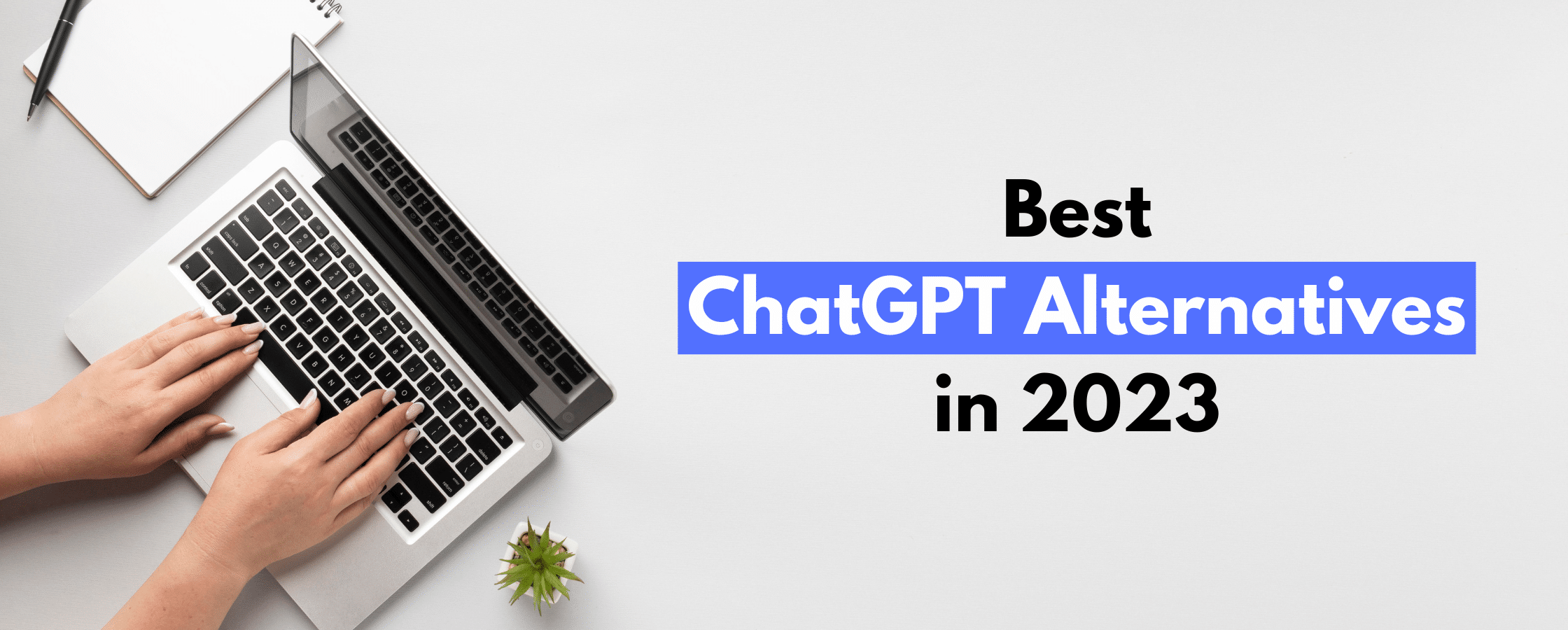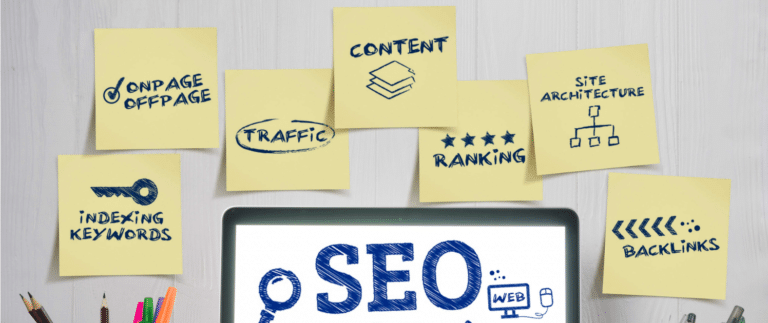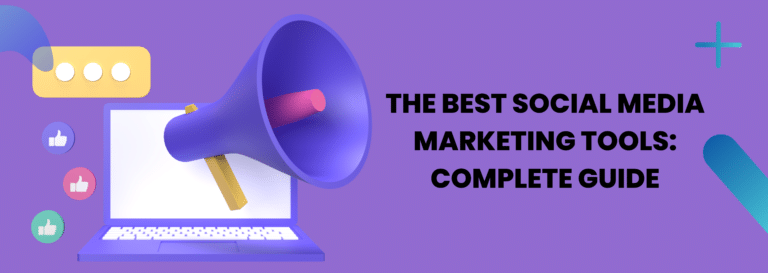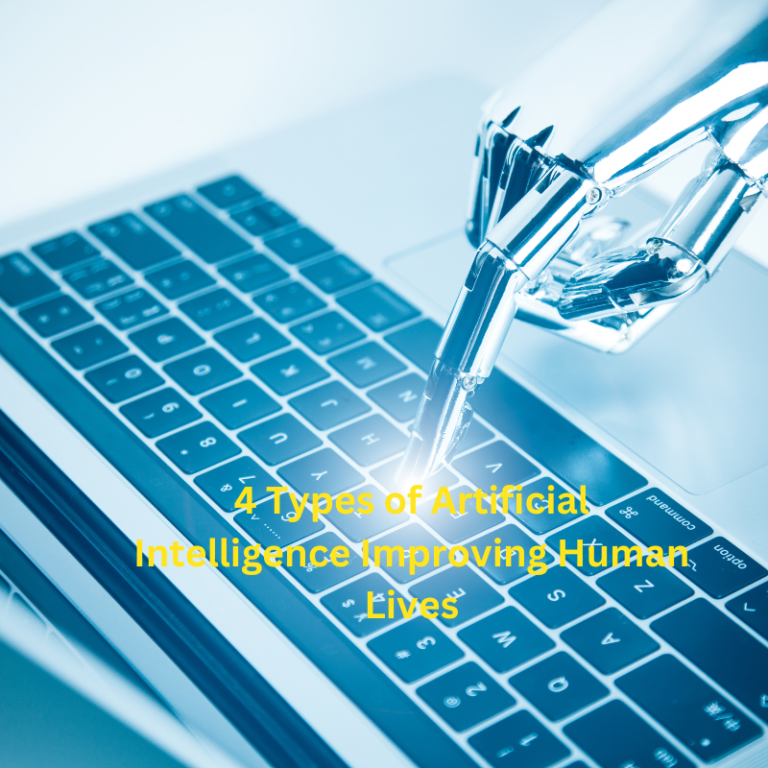Beyond ChatGPT: Best ChatGPT Alternatives in 2023 [Free & Paid]
As artificial intelligence continues to advance, the chatbot market has grown rapidly, offering businesses and individuals new ways to interact with their customers and users. ChatGPT is one of the most popular chatbots available. However, with so many alternatives emerging, people may want to explore their options. In this article, we will examine some of the best ChatGPT alternatives for 2023.
We will discuss both free and paid ai chatbots, their features, pros, and cons, and help you decide which alternative AI chatbots are right for you.
Whether you’re looking for a more affordable solution or one with more customization options, we’ll cover everything you need to know about the top chatGPT alternatives here.
So, let’s dive in and explore the best chatGPT alternatives for 2023.
Table of Contents
- What is ChatGPT and What are its Capabilities
- Why Should You Consider Going for a ChatGPT Alternative
- Top Free ChatGPT Alternatives
- Paid Chatbot Alternatives to ChatGPT
- Things to Consider While Choosing a Chatbot Alternative for Your Business
- Expected Future Developments and Trends in chatbot Technology
- Final Thoughts
- Frequently Asked Questions
What is ChatGPT and What are its Capabilities
ChatGPT is a large language model developed by OpenAI, based on the GPT-3.5 architecture. It is a chatbot designed to generate human-like responses to natural language queries and conversations.
It uses a machine learning algorithm to analyze vast amounts of data and learn from it, enabling it to understand and respond to a wide range of topics and questions.
The capabilities of this AI powered writing assistant are vast, thanks to its ability to process natural language and provide high quality content based on the data. It can respond in a conversational manner, answer questions, provide recommendations, make predictions, and more.
Its responses are not only contextually relevant and give up to date information, but also demonstrate a level of nuance and personality that makes it seem like you’re chatting with a real person or receiving a human like text.
ChatGPT is undeniably a valuable tool that can not just help you write amazing content that can rank well on a search engine, but it can also be used in a variety of applications, such as customer support, language learning app, personal assistants, ai language translation services, and educational resources, among others.
Why Should You Consider Going for a ChatGPT Alternative
As an AI language model, ChatGPT is designed to provide human-like interactions and responses to various queries voice commands, and tasks. We already know how impressive ChatGPT can be.
However, there are several reasons why one might consider going for a ChatGPT alternative:
- Limited Access: This AI tool is a proprietary technology owned by OpenAI, and access to it is restricted to specific organizations and developers. This means that it may not be available to everyone who needs it.
- Cost: ChatGPT’s pricing model may be prohibitive for some businesses or individuals. OpenAI charges users for every API request made, and the costs can add up quickly for high-traffic websites or applications.
- Performance: Although ChatGPT is an advanced language model, it may not be the best option for certain use cases. For example, if your application requires real-time language translation, ChatGPT’s latency may not be fast enough.
- Customization: ChatGPT is a general-purpose language model, meaning that it may not be tailored to specific industries or applications. In contrast, other language models can be customized to specific domains, such as legal, medical, or financial, which can be important for accuracy and relevance.
- Privacy Concerns: Because ChatGPT is a cloud-based service, it may raise privacy and security concerns for some users. Other language models may offer on-premises solutions or other privacy-enhancing features that are not available with ChatGPT.
Top Free ChatGPT Alternatives
While ChatGPT offers many advanced features and capabilities, it may not always be the best option for everyone due to its cost or specific use cases.
Fortunately, there are several top-quality, completely free, ChatGPT alternatives available that can help businesses and individuals enhance their customer engagement and support.
1. Mitsuku
Mitsuku is an AI chatbot developed by Steve Worswick. It is designed to simulate natural language conversations with users and can be used for a variety of purposes, including entertainment, education, and customer service.
SOME OF THE KEY FEATURES INCLUDE:
- Personality: Mitsuku has a distinct personality that is engaging and often humorous. She can remember previous conversations and use this information to build rapport with users.
- Knowledge: Mitsuku has access to a vast database of information, including general knowledge, current events, and trivia. She can answer a wide range of questions and engage in discussions on various topics.
- Emotions: Mitsuku is designed to simulate emotions and can respond appropriately to users’ moods and feelings. She can express empathy and offer support to users who may be feeling sad or anxious.
- Multi-language support: Mitsuku supports multiple languages, including English, Spanish, French, German, Italian, and Portuguese, among others.
PROS:
- Engaging personality: Mitsuku’s engaging and often humorous personality can make conversations with her more enjoyable and entertaining.
- Wide range of knowledge: Mitsuku has access to a vast database of information and can answer a wide range of questions on various topics.
- Emotional intelligence: Mitsuku can simulate emotions and respond appropriately to users’ moods and feelings, making her more relatable and empathetic.
- Multi-language support: Mitsuku supports multiple languages, making her accessible to users from various countries and regions.
CONS:
- Limited customization: Mitsuku’s personality and responses are pre-programmed and may not be easily customized to suit specific use cases or industries.
- Text-based only: Mitsuku is a text-based chatbot, which may not be suitable for users who prefer voice or video interactions.
- Internet-dependent: Mitsuku requires an internet connection to function, which may not be ideal for users in areas with limited or unreliable internet access.
- Limited AI capabilities: Although Mitsuku is an advanced chatbot, she may not be able to handle complex tasks or conversations beyond a certain level.
2. Replika
Replika is another one of AI tools that are designed to engage in conversations with users and provide emotional support. It is created by Luka, a San Francisco-based start-up company. Replika uses natural language processing algorithms and machine learning techniques to generate responses that simulate human-like conversations.
SOME OF THE KEY FEATURES INCLUDE:
- Personalization: Replika learns from the user’s interactions and tries to create a personalized experience for each user.
- Emotional support: Replika is designed to provide emotional support to users and help them cope with stress, anxiety, and other mental health issues.
- Conversational skills: Replika is programmed to engage in natural and flowing conversations, making it easy for users to communicate with the chatbot.
- Memory: Replika can remember previous conversations and use that information to build a more personalized experience for the user.
- Activities: Replika offers users different activities, such as games and quizzes, to help them relax and engage with the chatbot.
PROS:
- Availability: Replika is available 24/7, making it easy for users to access the chatbot whenever they need emotional support or someone to talk to.
- Personalization: Replika learns from the user’s interactions and provides a personalized experience to each user.
- Anonymity: Users can remain anonymous while using Replika, which can be helpful for those who do not feel comfortable discussing their mental health issues with others.
- Accessibility: Replika is available on both iOS and Android platforms, making it accessible to a wide range of users.
CONS:
- Limitations: While Replika is designed to provide emotional support, it cannot replace professional mental health services.
- Responses: Replika’s responses are generated by an AI algorithm, which can sometimes result in responses that are not helpful or appropriate.
- Privacy concerns: As with any online service, there are privacy concerns associated with using Replika. Users should be careful about the information they share with the chatbot.
- Dependence: There is a risk of users becoming too dependent on Replika for emotional support, which can be problematic if they are not able to develop healthy coping mechanisms outside of the chatbot.
3. ChatterBot
ChatterBot is a Python library for creating chatbots. It uses machine learning techniques and natural language processing algorithms to deliver accurate answers to user inputs. ChatterBot can be trained on a wide range of data sources, including online conversations, social media data, user input, and customer service logs.
SOME OF THE KEY FEATURES INCLUDE:
- Training: ChatterBot can be trained on custom datasets, allowing users to create chatbots tailored to their specific needs.
- Integration: ChatterBot can be integrated into various platforms and applications, including websites, messaging apps, and social media platforms.
- Multilingual support: ChatterBot supports multiple languages, making it accessible to users around the world.
- Conversational skills: ChatterBot can engage in natural and flowing conversations, making it easy for users to communicate with the chatbot.
- Modular design: ChatterBot has a modular design, allowing users to customize the chatbot’s functionality.
PROS:
- Customization: ChatterBot can be trained on custom datasets, allowing users to create chatbots that are tailored to their specific needs.
- Integration: ChatterBot can be integrated into various platforms and applications, making it a versatile tool for businesses and developers.
- Multilingual support: ChatterBot supports multiple languages, making it accessible to users around the world.
- Open-source: ChatterBot is an open-source project, which means that it is free to use and can be modified to suit individual needs.
CONS:
- Complexity: ChatterBot is a Python library, which means that it may require technical expertise to use and customize.
- Learning curve: Users may need to spend time learning how to train ChatterBot and integrate it into their applications.
- Response quality: ChatterBot’s responses are generated by an AI algorithm, which can sometimes result in responses that are not helpful or appropriate.
- Maintenance: Users may need to invest time and resources into maintaining and updating ChatterBot to ensure that it continues to function properly.
Paid Chatbot Alternatives to ChatGPT

As a state-of-the-art language model, ChatGPT has shown remarkable abilities in generating natural language text that resembles human-like conversations.
However, gaining access to ChatGPT can be challenging due to its paid subscription model. Fortunately, there are other paid chatbot alternatives available that can provide comparable functionalities to ChatGPT.
These alternatives offer businesses and developers the opportunity to create AI-powered chatbots that can interact with customers in a natural and personalized way.
In this section, we will explore some of the most popular paid chatbot alternatives to ChatGPT, highlighting their features, benefits, and limitations.
1. Dialogflow
Dialogflow is a Google-owned chatbot development platform that enables businesses and developers to build conversational interfaces and voice-enabled apps. With Dialogflow, users can create chatbots and conversational responses that understand natural language and can converse with customers using text or voice. Dialogflow offers several advanced features, such as machine learning, natural language processing (NLP), sentiment analysis, context management, and multi-language support.
SOME OF THE KEY FEATURES INCLUDE:
- Customizable Chatbots: Dialogflow offers a range of tools and features to help developers create highly customizable chatbots, including the ability to create custom entities and contexts, and to integrate with external APIs.
- Pre-built Integrations: Dialogflow comes with pre-built integrations for popular services like Google Assistant, Alexa, and Cortana, making it easy to build chatbots for multiple platforms.
- Analytics and Reporting: Dialogflow provides detailed analytics and reporting tools that allow developers to track user engagement, monitor chatbot performance, and identify areas for improvement.
- Voice Recognition: Dialogflow supports voice recognition for natural, conversational interactions with chatbots.
- Machine Learning: Dialogflow uses machine learning to continuously improve the accuracy and relevance of its NLP algorithms, making chatbots more intelligent over time.
PRICING AND PLANS:
Dialogflow offers a free plan that includes 15,000 text requests per month and five audio requests per month. Beyond this, Dialogflow offers three paid plans: Essentials, Plus, and Enterprise. The Essentials plan costs $0.002 per text request and $0.0065 per audio request, while the Plus plan costs $0.0045 per text request and $0.015 per audio request. The Enterprise plan requires a custom quote, which varies depending on the specific requirements and usage volume.
PROS:
- Dialogflow offers a user-friendly interface that is easy to use, even for beginners.
- Dialogflow’s NLP and machine learning capabilities enable chatbots to understand complex human language and improve conversational accuracy.
- Dialogflow integrates with various messaging and voice-enabled platforms, making it versatile and widely applicable.
- Dialogflow offers a free plan that includes basic chatbot functionality.
- Dialogflow provides comprehensive documentation and support to help users develop and troubleshoot their chatbots.
CONS:
- Dialogflow’s pricing can be high for businesses that require a large volume of requests or advanced features.
- Dialogflow has limited customization options, which may not be suitable for businesses with specific requirements.
- Dialogflow’s analytics and reporting capabilities are limited compared to other chatbot platforms.
- Dialogflow requires a Google account to use, which may not be preferred by some users who prefer to use other cloud services.
2. IBM Watson Assistant
IBM Watson Assistant is an AI-powered chatbot platform that helps businesses automate customer interactions and provide personalized customer support. It is a cloud-based platform that allows businesses to build, train, and deploy chatbots across multiple channels, including websites, mobile apps, social media platforms, and messaging platforms. The platform uses natural language processing (NLP) and machine learning algorithms to understand user queries and respond with relevant and accurate information.
SOME OF THE KEY FEATURES INCLUDE:
- Conversation design tools to build, test, and refine chatbot conversations
- Pre-built industry-specific templates to jumpstart chatbot development
- Integration with third-party systems and data sources to provide personalized responses
- Analytics and reporting to track performance and improve chatbot effectiveness
- Multi-language support to reach global customers
- Integration with voice assistants like Amazon Alexa and Google Assistant
PRICING AND PLANS:
IBM Watson Assistant offers a range of pricing plans based on usage and features. The plans include a free Lite plan, a Standard plan, and a Plus plan. The Lite plan is free and allows up to 10,000 API calls per month with limited features. The Standard plan starts at $0.0025 per API call and includes more features, including integration with live chat and email. The Plus plan is designed for enterprise customers and includes advanced features such as machine learning, sentiment analysis, and more. The pricing for the Plus plan is customized based on the specific requirements of the business.
PROS:
- IBM Watson Assistant is a powerful chatbot platform with advanced features like natural language processing, machine learning, and sentiment analysis
- The platform is cloud-based and can be accessed from anywhere with an internet connection
- The pre-built industry-specific templates can help businesses get started with chatbot development quickly
- Integration with third-party systems and data sources allows for personalized responses and a better user experience
- The platform offers analytics and reporting to track performance and improve chatbot effectiveness
CONS:
- The pricing can be expensive for businesses with high usage
- The platform may require some technical expertise to set up and customize
- The platform can be complex and overwhelming for beginners
- The chatbot conversations may not always be perfect and may require human intervention to resolve complex issues
3. Amazon Lex
Amazon Lex is a cloud-based conversational AI platform that enables businesses to build and deploy chatbots and virtual assistants for customer engagement. This tool uses automatic speech recognition (ASR) and natural language understanding (NLU) technologies to provide an interactive interface for customers to interact with businesses via voice or text. Unlike ChatGPT, it integrates with various messaging platforms such as Facebook Messenger, Slack, and Twilio, as well as Amazon Echo devices.
SOME OF THE KEY FEATURES INCLUDE:
- Dialog management for handling complex conversations with customers
- Support for natural language understanding in multiple languages
- Integration with Amazon Web Services (AWS) services such as AWS Lambda, AWS S3, and AWS IAM
- Text-to-speech capabilities for voice interactions
- Customizable conversation flows based on the business’s requirements
- Real-time monitoring and analytics for performance tracking and improvements
PRICING AND PLANS:
Amazon Lex offers a pay-as-you-go pricing model based on the number of text and voice requests your chatbot processes each month. There are no upfront costs, and you only pay for what you use. The pricing includes two components: the number of text or voice requests and the amount of time it takes for Amazon Lex to process each request. The first 10,000 text requests and 5,000 speech requests per month are free, and after that, the pricing starts at $0.004 per text request and $0.008 per voice request. Amazon Lex also offers a free tier for 12 months, which includes 10,000 text requests and 5,000 speech requests per month.
PROS:
- Amazon Lex offers a flexible and scalable solution for businesses of all sizes
- The platform integrates seamlessly with other AWS services for enhanced functionality
- The pay-as-you-go pricing model makes it an affordable option for businesses
- The platform provides pre-built templates for faster development and deployment
- Amazon Lex’s advanced natural language understanding capabilities enable businesses to create more personalized and engaging chatbot experiences
CONS:
- The platform requires some technical expertise to set up and customize
- The platform can be complex and overwhelming for beginners
- Amazon Lex’s speech recognition capabilities may not always be perfect and may require human intervention to resolve complex issues.
- The platform has limitations on the number of concurrent conversations it can handle at once.
Things to Consider While Choosing a Chatbot Alternative for Your Business
Choosing the right chatbot alternative for your business is a crucial decision that requires careful consideration of various factors. Here are some of the things you should keep in mind when choosing a chatbot alternative:
Cost
One of the most significant factors to consider is the cost of the chatbot alternative. Some chatbots offer free plans, while others require a subscription or upfront payment. You should consider your budget and choose a chatbot that offers the features you need within your budget.
Customization
Consider the level of customization options the chatbot alternative provides. Some chatbots allow for extensive customization, such as branding, personality, and tone, while others offer more limited options. Choose a chatbot that allows you to customize it to your brand’s voice and personality.
Integration
Integration capabilities are essential when choosing a chatbot alternative. Ensure that the chatbot can integrate seamlessly with your existing platforms, such as your website, social media, and customer support software.
NLP Capabilities
Natural language processing (NLP) capabilities are critical for a chatbot to understand and respond to user queries effectively. Consider the chatbot’s NLP capabilities and its ability to learn from user interactions.
Support
The level of support offered by the chatbot alternative is crucial. Ensure that the chatbot provider offers reliable customer support, such as a dedicated support team or comprehensive documentation.
Security
The chatbot alternative should also be secure and protect user data. Ensure that the chatbot provider offers robust security measures, such as encryption and data privacy policies.
Expected Future Developments and Trends in chatbot Technology
Chatbot technology is rapidly evolving, and several developments and trends are expected to shape its future. Here are some of the most anticipated future developments and trends in chatbot technology:
Natural Language Processing (NLP) Advancements
Natural language processing advancements are expected to improve chatbot accuracy, making them more capable of understanding complex and nuanced human language. This will enable chatbots to provide more natural and personalized conversations.
Integration with Artificial Intelligence (AI)
Integration with AI will enhance chatbots’ cognitive capabilities, enabling them to learn and adapt to user interactions better. This will make chatbots more responsive and provide a more human-like experience.
Chatbots as Digital Assistants
Chatbots are expected to evolve from simple chat interfaces to full-fledged digital assistants that can help with more complex tasks, such as booking appointments, scheduling tasks, and managing emails.
Expansion into New Industries
Chatbots will expand beyond the traditional domains of customer service and support and move into new industries such as healthcare, finance, and education.
Multilingual Chatbots
Multilingual chatbots will become more prevalent as businesses expand globally, enabling them to cater to a more diverse audience.
Voice-Based Chatbots
Voice-based chatbots are becoming more common, and advancements in voice recognition technology will make them more accurate and reliable
Final Thoughts
In conclusion, while ChatGPT is a highly advanced and powerful language model, there are several alternative options available in 2023 for those seeking to integrate chatbots or other conversational AI solutions into their businesses or projects.
Some of these alternatives, both free and paid, offer unique features and benefits that may be better suited to specific use cases.
It is important to consider factors such as pricing, ease of use, scalability, and customization options when evaluating different chatbot alternatives.
Ultimately, the best choice will depend on individual needs and preferences, but with the rapidly evolving field of AI, there are sure to be even more options available in the future.
Frequently Asked Questions
1. What is ChatGPT?
ChatGPT is a large language model developed by OpenAI, based on the GPT-3.5 architecture. It is designed to generate human-like responses to natural language queries and conversations.
2. Why would someone look for ChatGPT alternatives?
There could be various reasons why someone might look for other ChatGPT alternatives elsewhere. One possible reason is that they are not satisfied with the quality of responses generated by ChatGPT or they are looking for more specialized natural language input models for their specific needs.
3. How can I choose the best ChatGPT alternative for my needs?
It depends on your specific needs and use case. Some factors to consider while choosing a language model include its performance on the specific task, the size of the model, the cost, and the ease of integration with your existing systems. It is recommended to evaluate multiple large language models, and benchmark them against your specific requirements before making a decision.
4. Which AI is better than ChatGPT?
Bing Chat could be more precise than ChatGPT and can provide more accurate answers, as it draws on new information and relies on many sources of information.
5. Is there any alternative for ChatGPT?
A few alternatives to something like ChatGPT can be Character AI, Google Bard, Perplexity AI, Chatterbot, Replika, Mitsuku, Amazon Lex, Dialogflow, and IBM Watson.
6. Is there a free version of ChatGPT?
Yes. Currently, the basic version of ChatGPT is available for free.
7. What is Google’s alternative to ChatGPT?
Google’s alternative to ChatGPT is a language model called “Google Cloud AI Platform Language Model,” which is a part of the Google Cloud AI Platform suite of services. This language model uses state-of-the-art deep learning techniques to generate natural language text and has a large capacity for contextual understanding and other natural language processing techniques.
8. Is ChatGPT the most advanced AI?
While ChatGPT is currently one of the most advanced AI and language models used for natural language processing, it’s possible that new neural language models will be developed in the future that surpass its capabilities.







